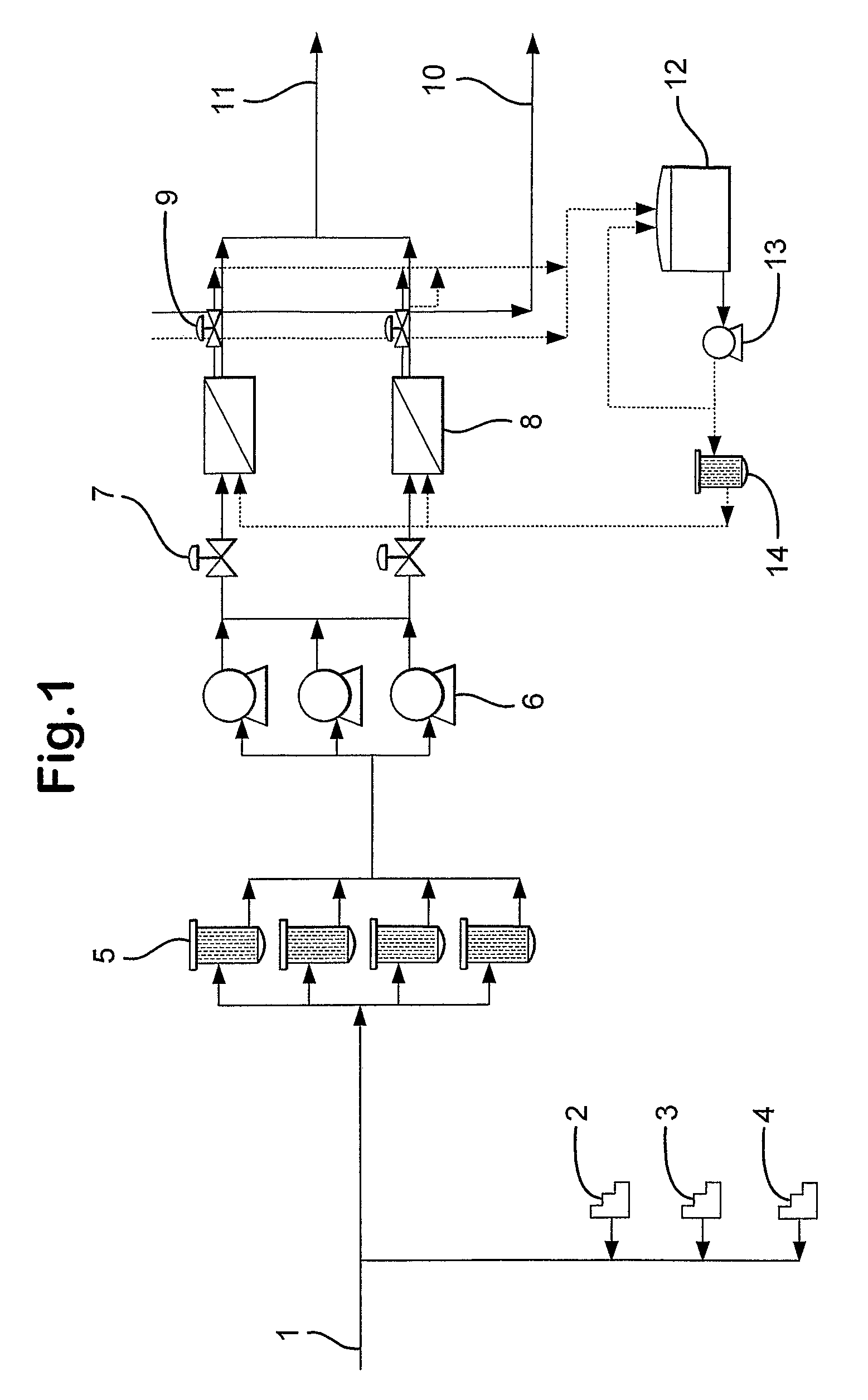Desalination method
- Summary
- Abstract
- Description
- Claims
- Application Information
AI Technical Summary
Benefits of technology
Problems solved by technology
Method used
Image
Examples
Embodiment Construction
[0090]In the flow diagram of FIG. 1, a high salinity water feed stream 1 is passed through a coarse filter (not shown). A biocide concentrate stream 2, a sodium bisulfite concentrate stream 3 and a scale inhibitor concentrate stream 4 are continuously dosed into the high salinity water feed stream 1 upstream of a plurality of fine filters 5 that are arranged in parallel. The feed stream is then passed via at least one low pressure pump 6 and valves 7 to a plurality of reverse osmosis units 8 that are arranged in parallel. Flow control valves 9 are provided on the outlet for the waste brine stream 10 (retentate). The waste brine stream 10 is discharged to the environment after removing energy therefrom via a Pelton Wheel, a Dual work energy exchanger, or a pressure exchanger (not shown) that is coupled to the rotors of the low pressure pump(s) 6. The low salinity water product stream 11 (retentate) is passed to a storage tank (not shown) before being returned to the surface, for exam...
PUM
 Login to View More
Login to View More Abstract
Description
Claims
Application Information
 Login to View More
Login to View More - R&D
- Intellectual Property
- Life Sciences
- Materials
- Tech Scout
- Unparalleled Data Quality
- Higher Quality Content
- 60% Fewer Hallucinations
Browse by: Latest US Patents, China's latest patents, Technical Efficacy Thesaurus, Application Domain, Technology Topic, Popular Technical Reports.
© 2025 PatSnap. All rights reserved.Legal|Privacy policy|Modern Slavery Act Transparency Statement|Sitemap|About US| Contact US: help@patsnap.com



